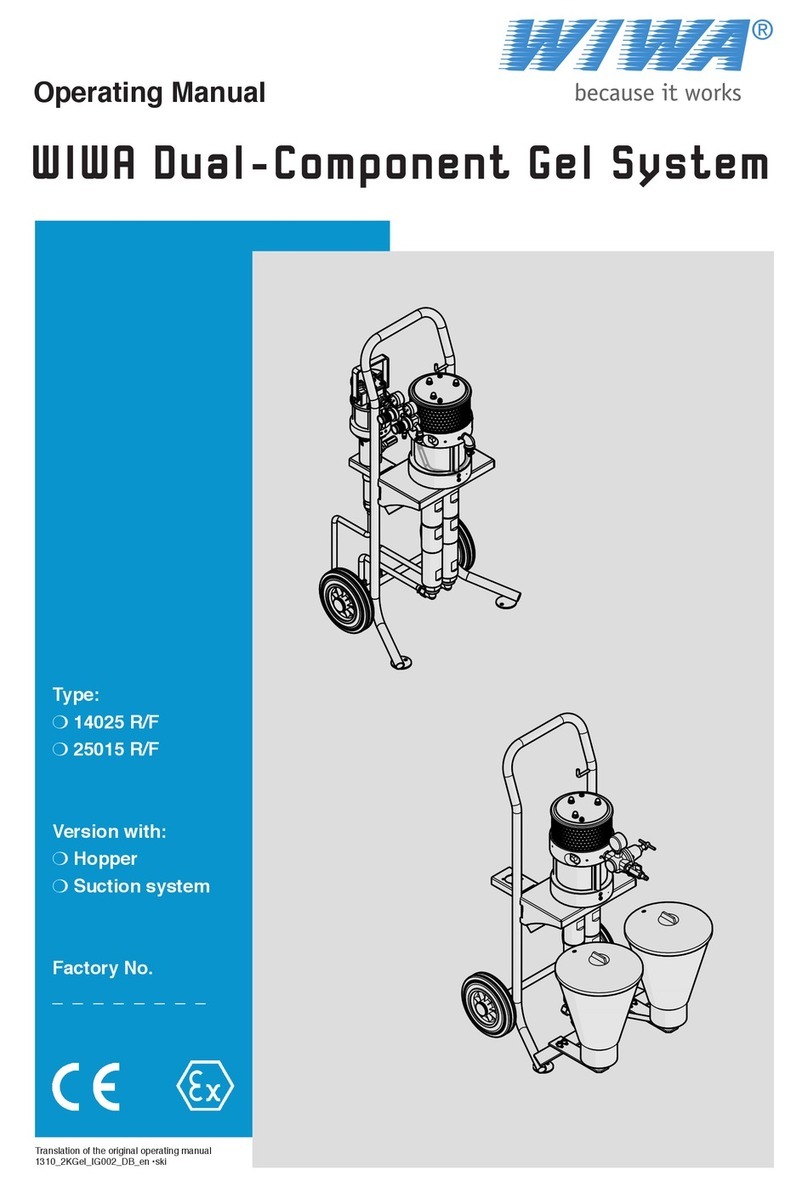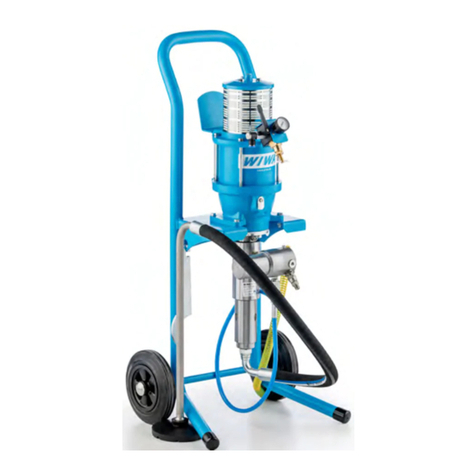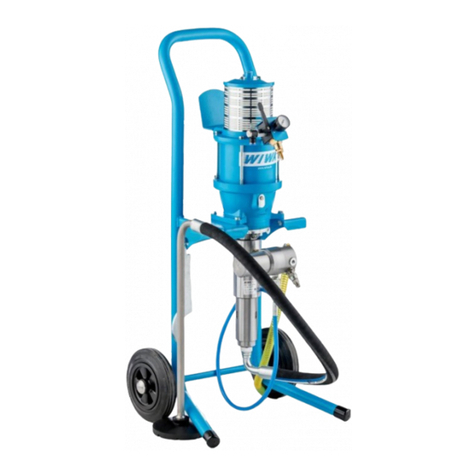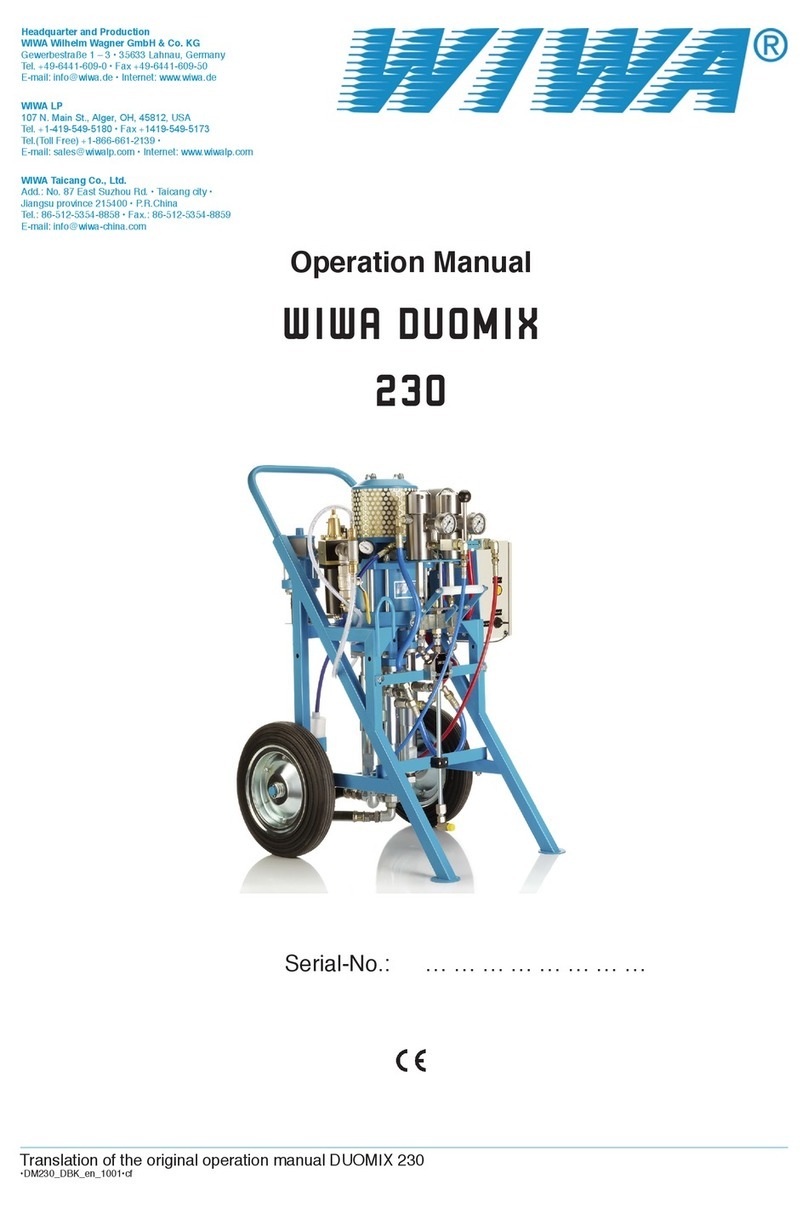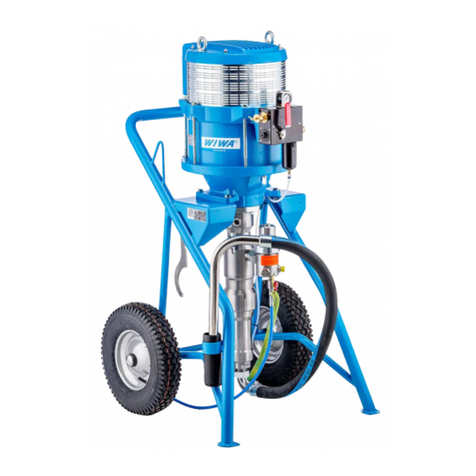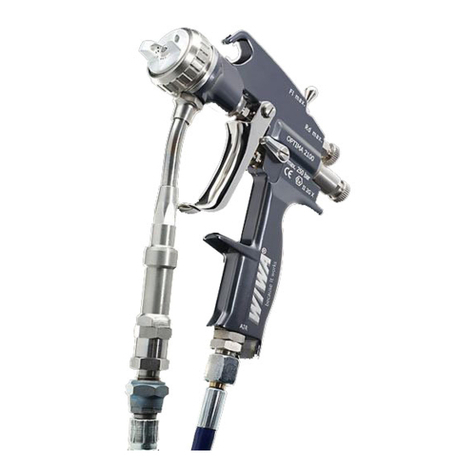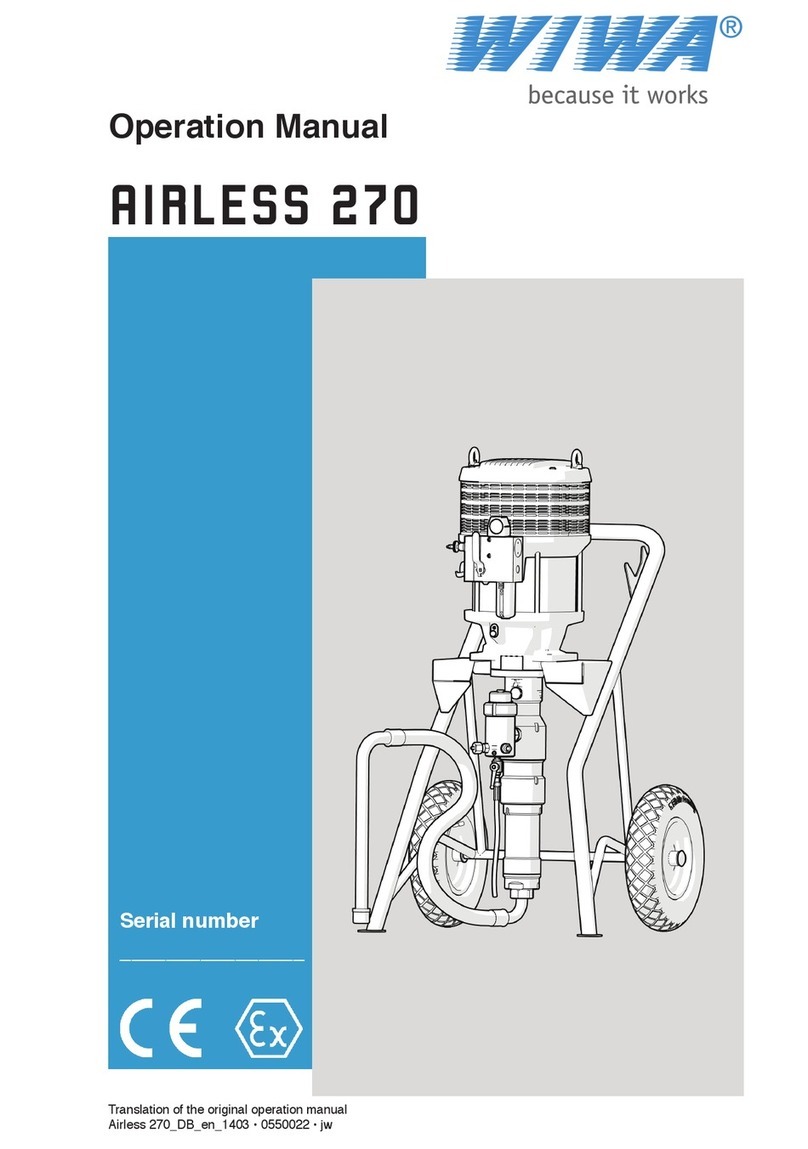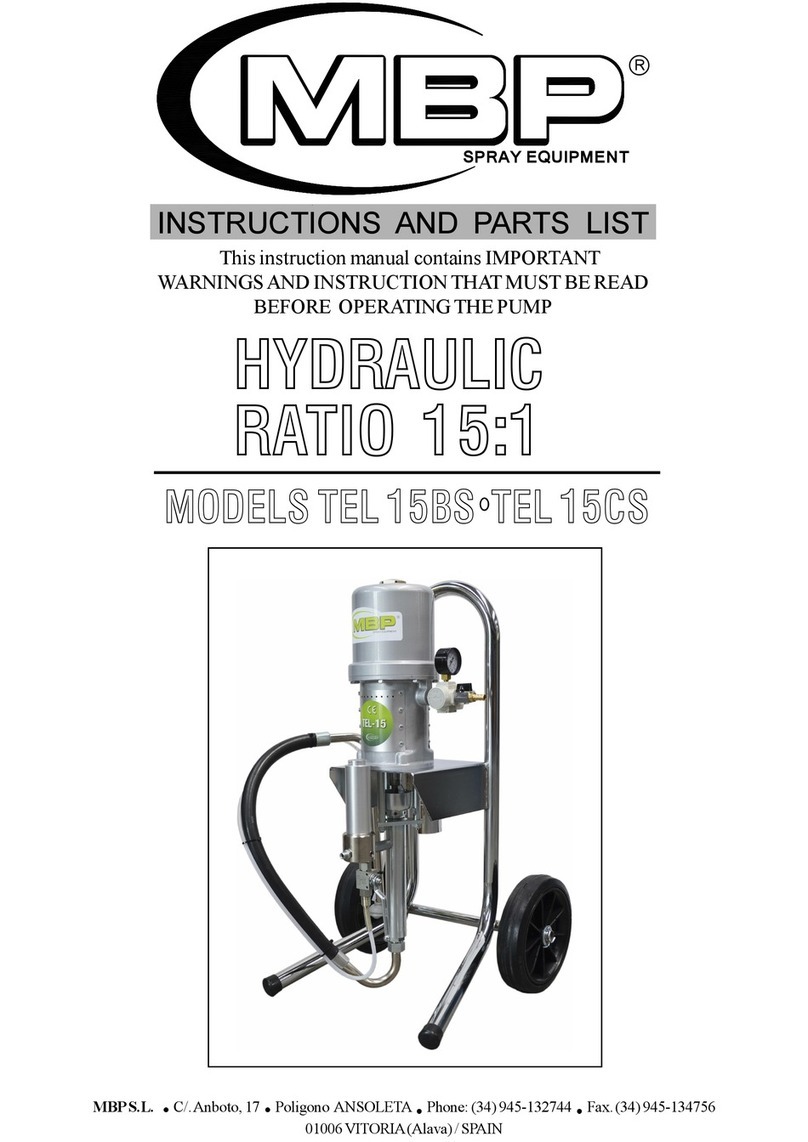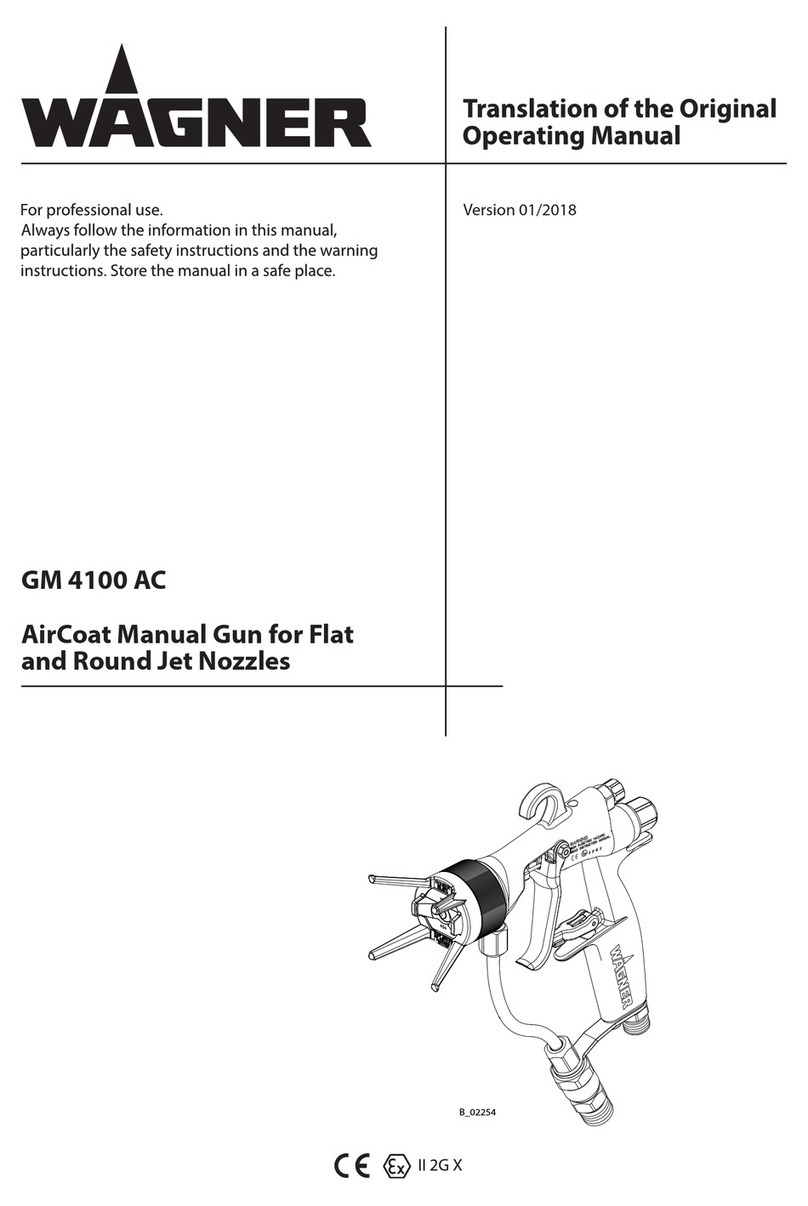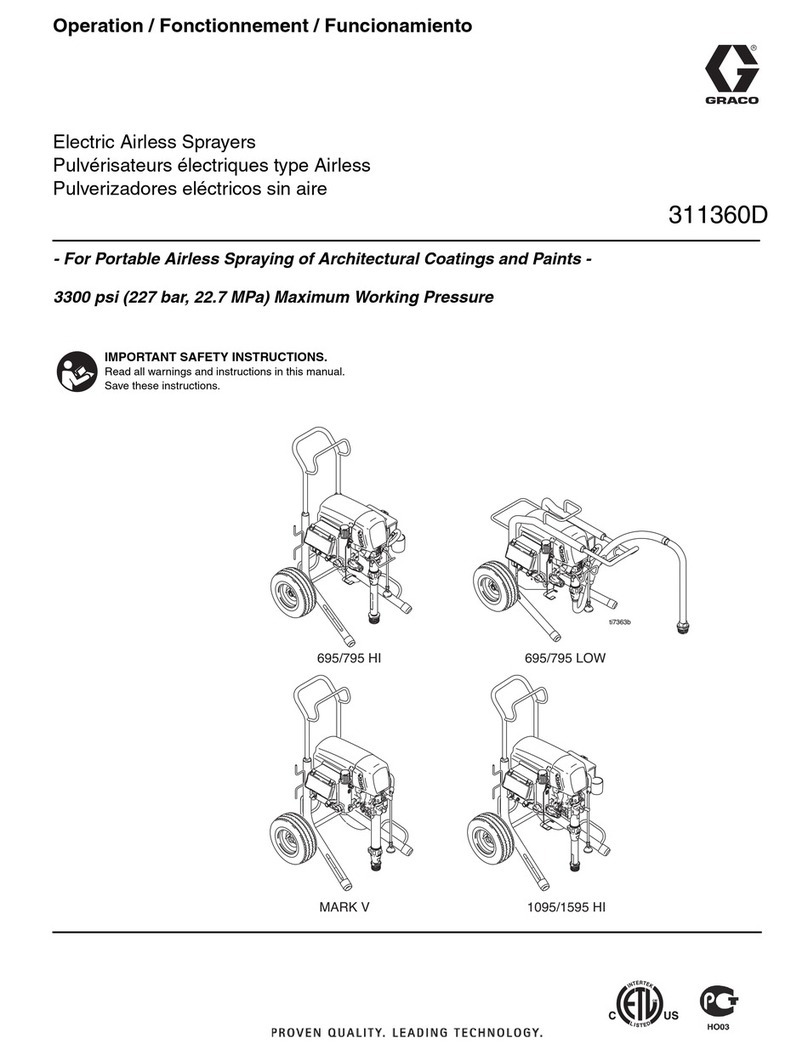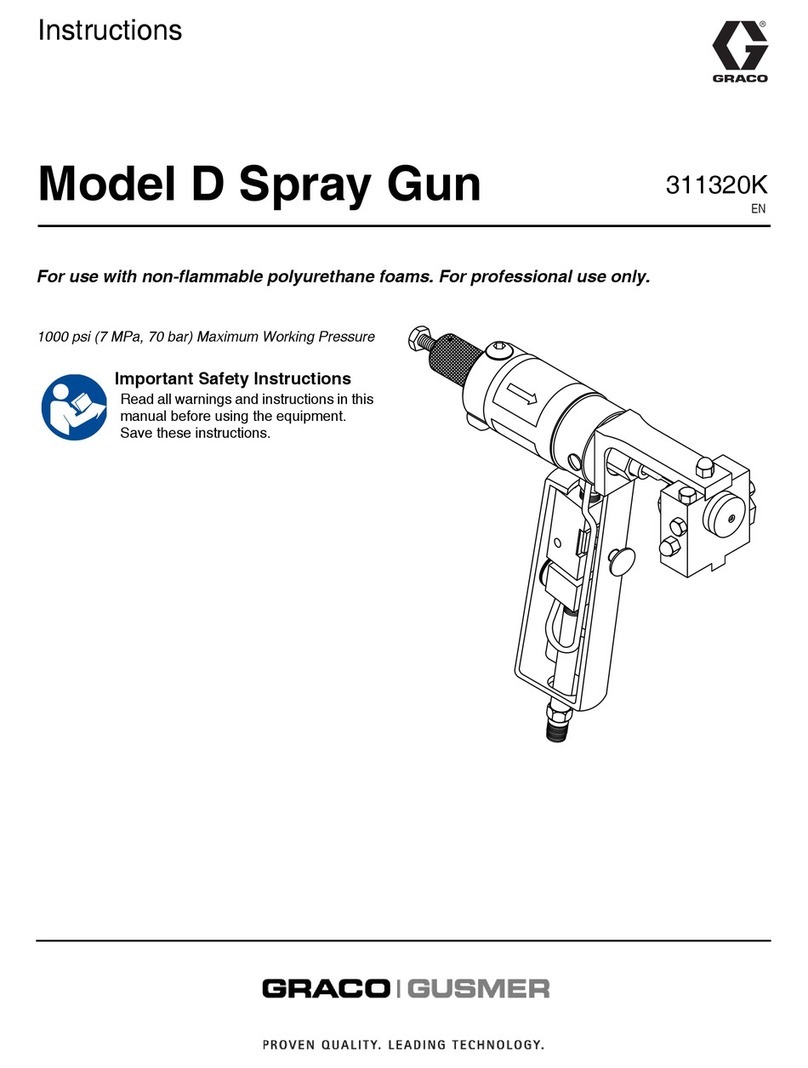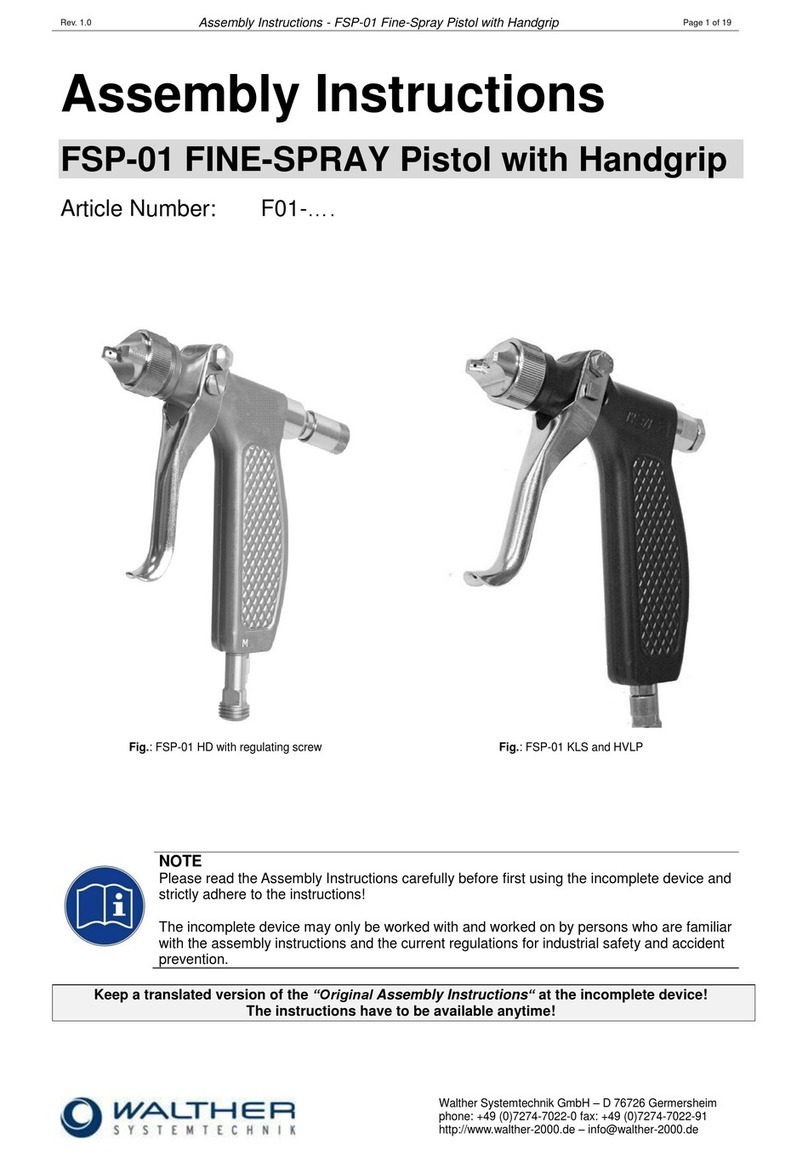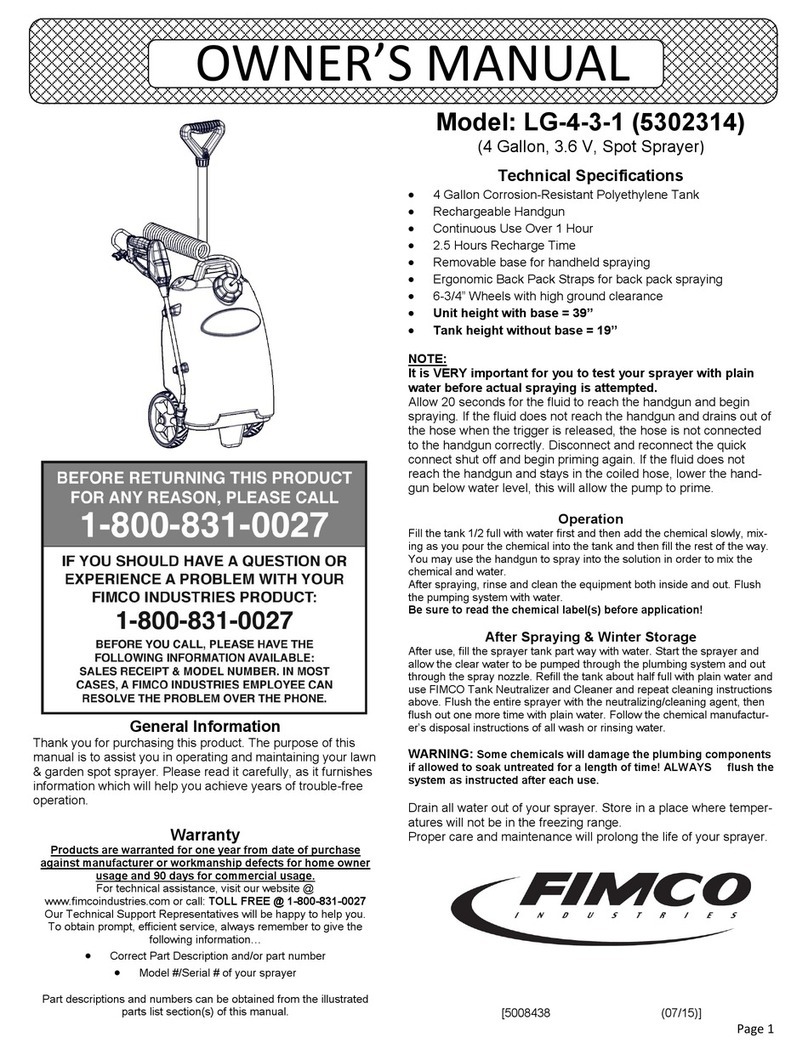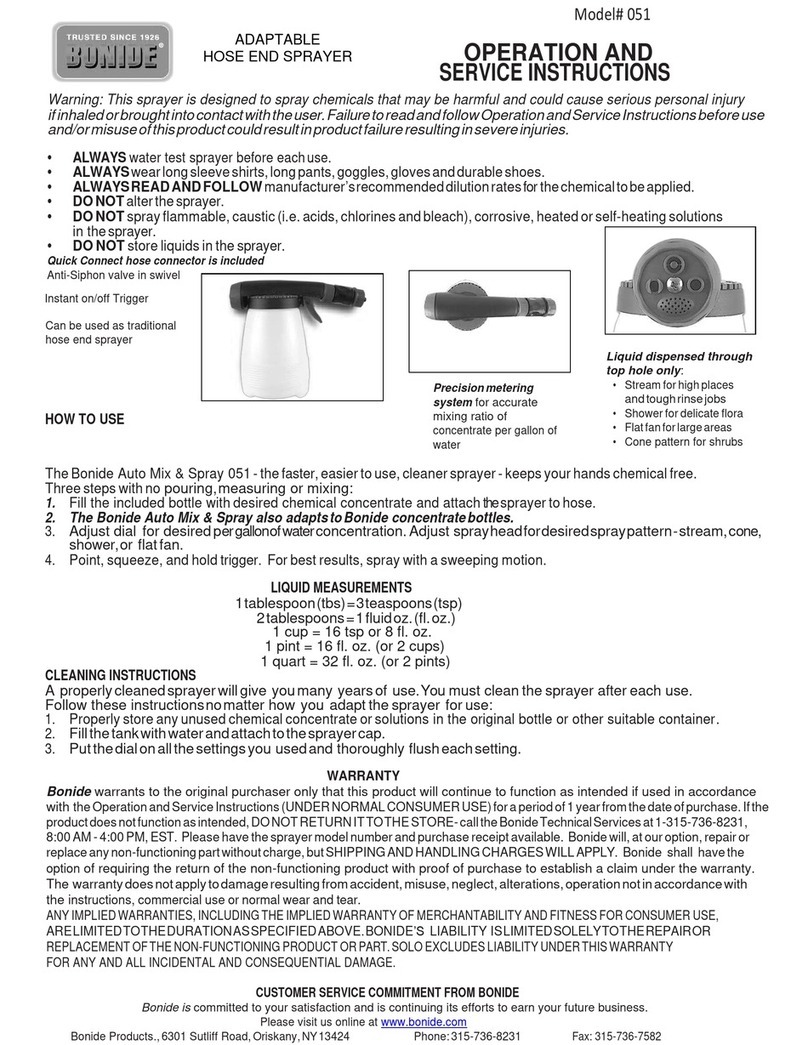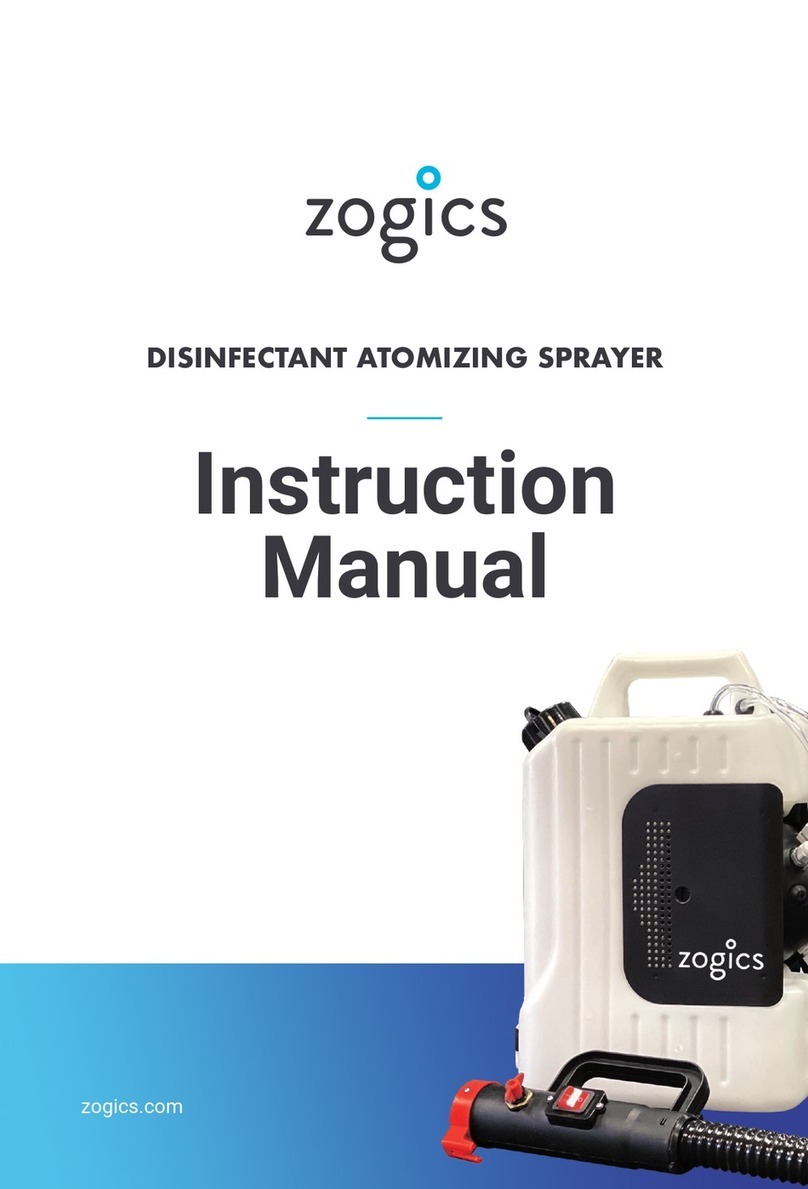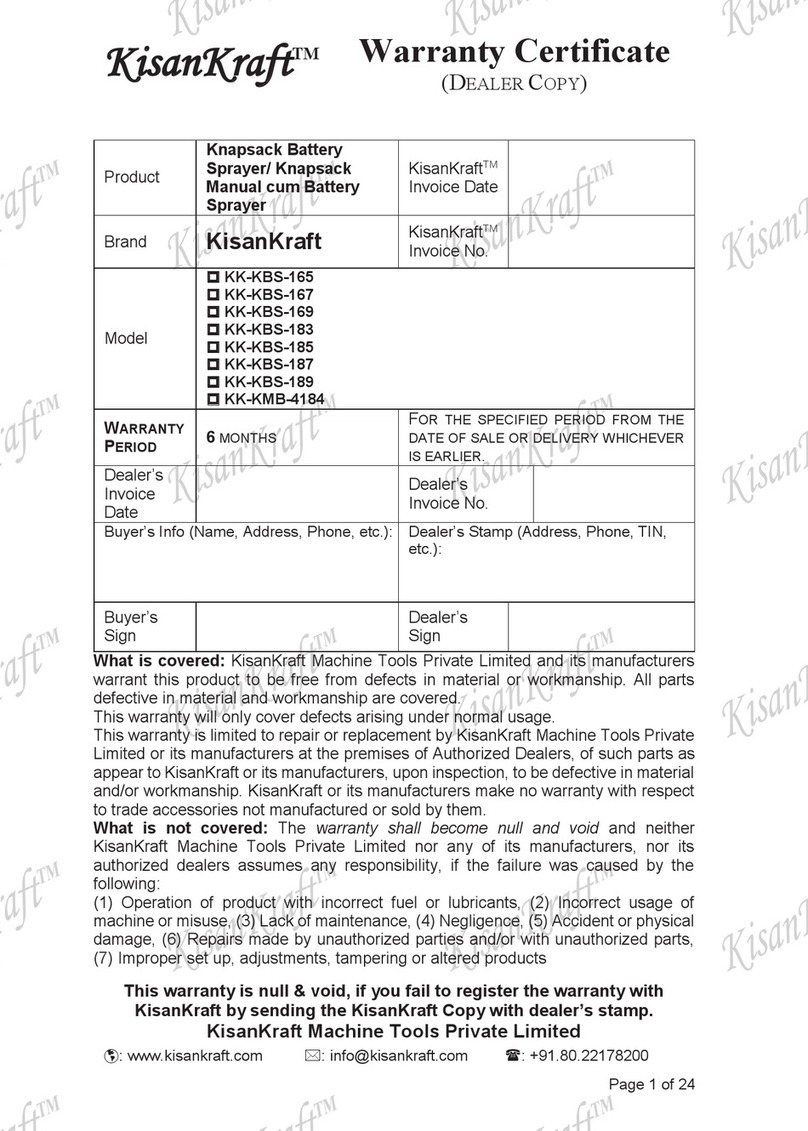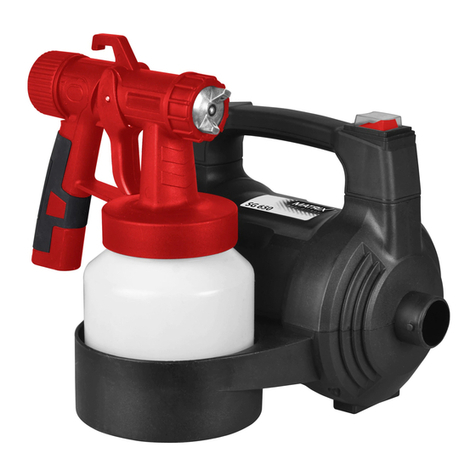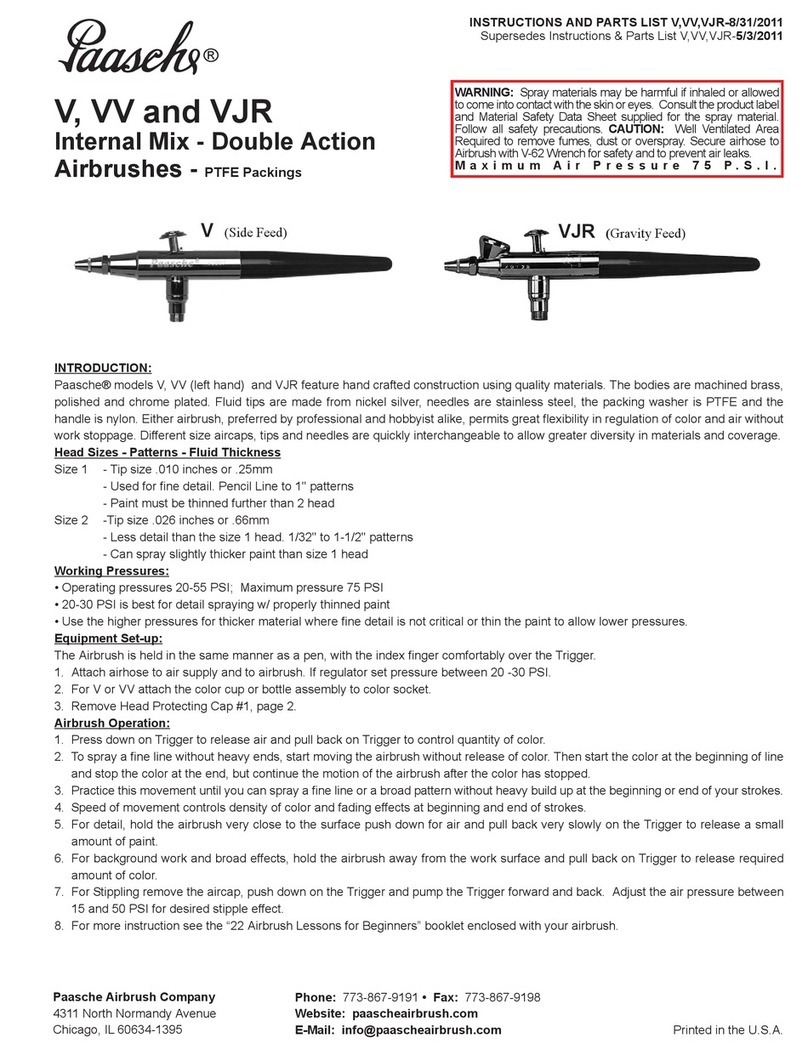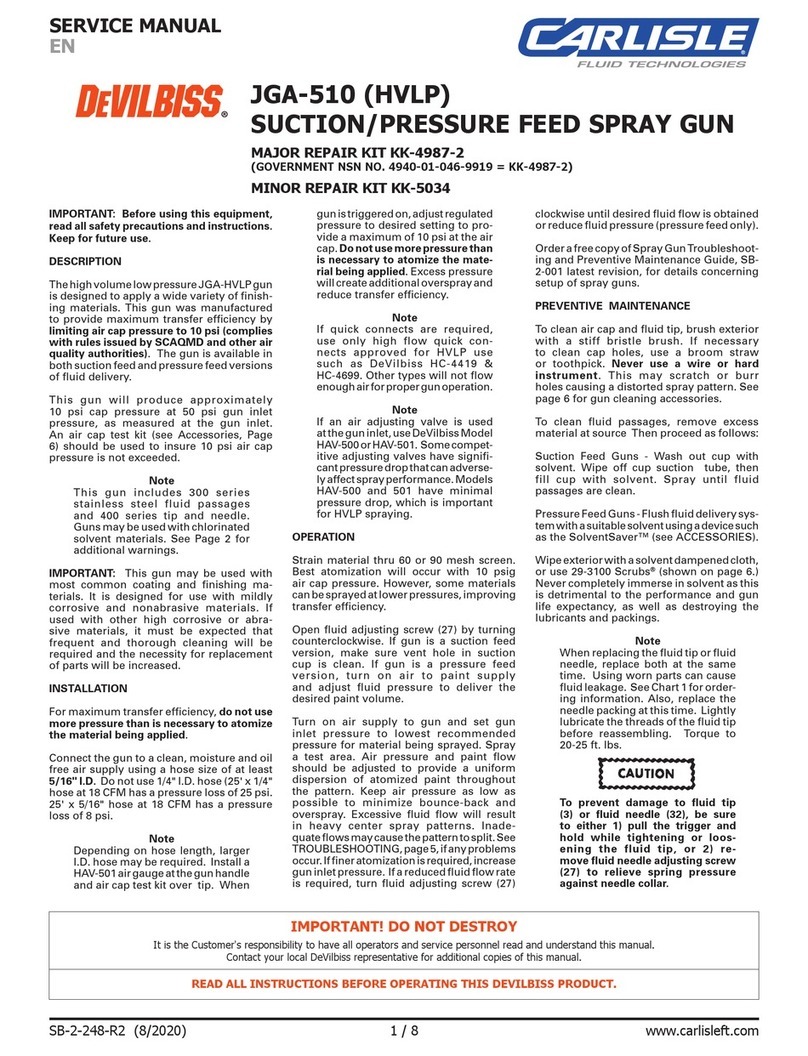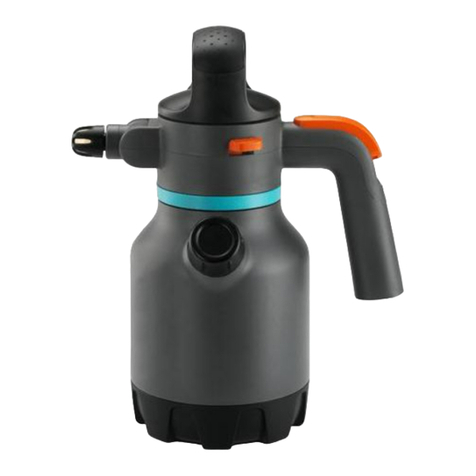
1 Foreword
Dear Customer!
We are delighted that you have decided to buy one of our devices.
This operating manual is intended for the operating and maintenance per-
sonnel. It contains all the information required to working with this device.
The machine operator must ensure that operators and maintenance per-
sonnel always have an operating manual at their disposal in a language
that they understand.
Safe and reliable operation of the device requires further information in addi-
tion to this operating manual.
➤Read and comply with the applicable guidelines for your country.
In Germany, these are the “Richtlinien für Flüssigkeitsstrahler” (Guide-
lines for Liquid Jets), published by: Hauptverband der Gewerblichen
Berufsgenossenschaften.
➤Moreover the manufacturer's instructions and guidelines for coating or
feeder materials are to be observed at all times.
We strongly recommend to add all relevant guidelines and accident preven-
tion instructions to this operating manual.
However, if you have any questions, please do not hesitate to contact us.
WIWA Wilhelm Wagner GmbH & Co. KG. hopes that you have excellent
work results using your device.
Copyright
© 2013 WIWA
This User Guide remains the copyright of
WIWA Wilhelm Wagner GmbH & Co. KG.
Gewerbestr. 1-3 • 35633 Lahnau • Germany
Internet: www.wiwa.de
This operating manual is solely intended for personnel involved in prepara-
tion, operation and servicing.
It is prohibited to pass on this operating manual for reproduction, utilisation
or communication of its contents, unless this has been explicitly permit-
ted. Non-compliance may result in claims for damage compensation. All
rights reserved in the event of registration of the patented design, industrial
design or registered design.
This operating manual only applies in conjunction with the machine card
that was given to you with the user manual for your equipment. Please
check that the data on the type plate match those on the machine card.
Please notify us immediately if there are discrepancies, if the user manual
has been incorrectly compiled or if the type plate is missing.
Foreword
1-1 Translation of the original operating manual
•1306Rev03_550014_PUGUN4040_en•ski

